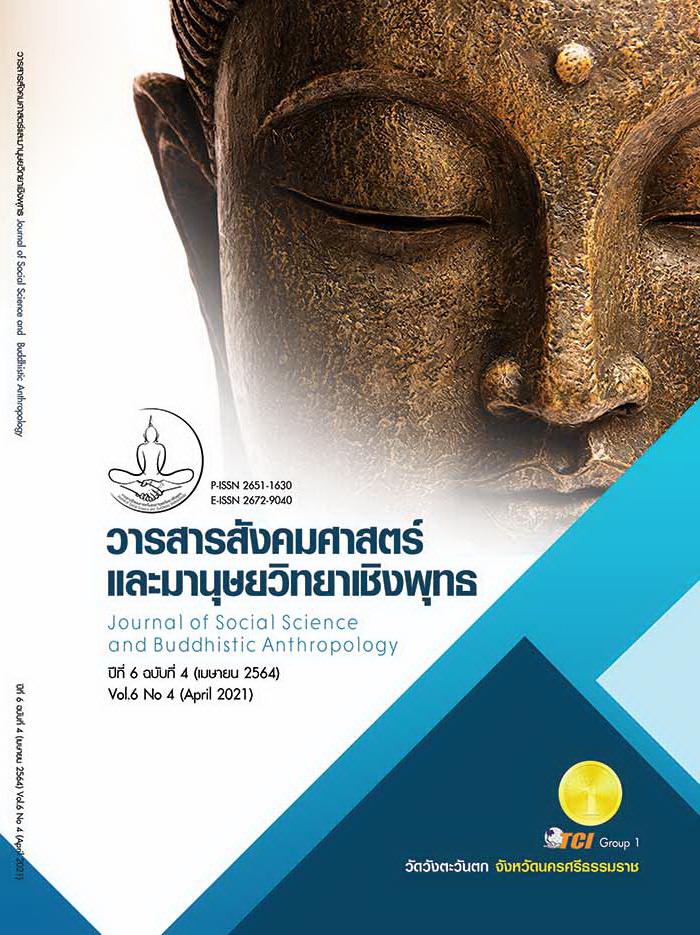THE APPLICATION OF COORDINATE CELESTIAL OBJECTS ON CELESTIAL SPHERE MODEL CREATED BY 3D PRINTING TECHNOLOGY TO PROMOTE UNDERSTANDING OF ASTRONOMICAL CONCEPTS
Keywords:
Spherical Model, Celestial Sphere, Positions and Paths of Sunrise and Sunset Astronomical Concept, 3D PrintingAbstract
The objectives of this research article were to 1) develop a spherical model with specified coordinates of celestial objects by the application of 3D printing technology 2) study the effectiveness of the use of the spherical model in students' ability to grasp astronomical concepts, position and path of the sunrise and the sunset topics. The sample group was the group of 28 eleventh-grade students from Benchamaracharungsarit Chachoengsao School. The data collecting tools in this research consisted of 2 assessment forms (i.e., the spherical model, the conceptual understanding of astronomy test. We have analyzed the collected data following the standard statistical formalisms such as percentage, mean, standard deviation, dependent t-test, and normalized gain (<g>). The statistical analysis reveals the following results. First, the spherical model with specified coordinates of celestial objects by the application of 3D printing technology is suitable for the learning environment and has higher efficiency than the established criteria (3.51). Second, the students scored higher on the astronomical topics (e.g., the positions and paths of sunrise and sunset throughout the year) after the implementation of the spherical model with a statistical significance of 0.01 Both the concept of ecliptic, path of the sun, sun appears, sun position with season and sun phenomenon. The concept of sun position with season has the highest average score. Followed by path of the sun, ecliptic, sun phenomenon and sun appears. Students' ability to grasp astronomical concepts, position and path of the sunrise and the sunset there are more points in every topics and the average normalized gain <g> of 0.86, indicating the decrease of misconception.
References
กระทรวงศึกษาธิการ. (2551). ตัวชี้วัดและสาระการเรียนรู้แกนกลางกลุ่มสาระการเรียนรู้วิทยาศาสตร์ตามหลักสูตรหลักสูตรแกนกลางการศึกษาขั้นพื้นฐาน พ.ศ. 2551. กรุงเทพมหานคร : ชุมชนสหกรณ์การเกษตรแห่ง ประเทศไทย.
กระทรวงศึกษาธิการ. (2560). ตัวชี้วัดและสาระการเรียนรู้แกนกลาง กลุ่มสาระการเรียนรู้วิทยาศาสตร์ (ฉบับปรับปรุง พ.ศ. 2560) ตามหลักสูตรแกนกลางการศึกษาขั้นพื้นฐาน พ.ศ. 2551. กรุงเทพมหานคร: ชุมชนสหกรณ์การเกษตรแห่งประเทศไทย.
ไชยยศ เรืองสุวรรณ. (2553). หลัการทฤษฎีเทคโนโลยีและนวัตกรรมทางการศึกษา. กรุงเทพมหานคร: เรือนแก้ว การพิมพ์.
นิพนธ์ ทรายเพชร. (2558). การดูดาวขั้นต้น : คู่มือดูดาวอย่างง่ายสำหรับท้องฟ้าประเทศไทยและศึกษาความลี้ลับทางดาราศาสตร์ (พิมพ์ครั้งที่ 1 ฉบับปรับปรุง). กรุงเทพมหานคร: นานมีบุ๊คส์.
บุญรักษา สุนทรธรรม. (2550). ดาราศาสตร์ฟิสิกส์. เชียงใหม่: สถาบันวิจัยดาราศาสตร์แห่งชาติ.
สถาบันทดสอบทางการศึกษาแห่งชาติ (องค์การมหาชน). (2562). รายงานผลการทดสอบทางการศึกษาระดับชาติขั้นพื้นฐาน (O-NET) ชั้นมัธยมศึกษาปีที่ 6 ปีการศึกษา 2561. เรียกใช้เมื่อ 18 ธันวาคม 2563 จาก http://www.newonetresult.niets.or.th /AnnouncementWeb/PDF/SummaryONETM6_ 2561.pdf
สถาบันทดสอบทางการศึกษาแห่งชาติ (องค์การมหาชน). (2563). สรุปผลการทดสอบทางการศึกษาระดับชาติขั้นพื้นฐาน ระดับชั้นมัธยมศึกษาปีที่ 6 ปีการศึกษา 2562. เรียกใช้เมื่อ 18 ธันวาคม 2563 จาก http://www.newonetresult.niets.or.th/ AnnouncementWeb/PDF/SummaryONETM6_ 2562.pdf
American Association for the Advancement of Science (AAAS). (1993). Project 2061 Benchmarks for Science Literacy. New York Oxford University Press. Retrieved December 18 , 2020, from http://www.project2061.org /publications/bsl/online/index.php
Gilbert, J. K. et al. (2000). Positioning models in science education and in design and technology education. In Developing models in science education. Springer.
Gilbert, S. W. & Ireton, S. W. (2003). Understanding models in earth & space science: NSTA press. Retrieved December 18, 2020, from https://eric.ed. gov/?id=ED481490
Justi, R. & Gilbert, J. (2003). Teachers' views on the nature of models. International Journal of Science Education, 25(11), 1369-1386.
Lightman, A. & Sadler, P. M. (1993). Teacher predictions versus actual student gains. The Physics Teacher, 31(3), 162-167.
Mayer, R. E. (1989). Models for understanding. Review of educational research, 59(1), 43-64.
Percy, J. R. (2005). Why Astronomy is Useful and Should be Included in the School Curriculum. Retrieved December 18 , 2020, from http://adsabs. harvard.edu/full/2005HiA....13.1020P
Trumper, R. (2001). A cross-age study of junior high school students' conceptions of basic astronomy concepts. International Journal of Science Education, 23(11), 1111-1123.
Van Driel, J. H. & Verloop, N. (2002). Experienced teachers' knowledge of teaching and learning of models and modelling in science education. International Journal of Science Education, 24(12), 1255-1272.
White, B. Y. (1993). ThinkerTools: Causal models, conceptual change, and science education. Cognition and instruction, 10(1), 1-100.
Zeilik, M. et al. (1998). Misconceptions and their change in university-level astronomy courses. The Physics Teacher, 36(2), 104-107.








